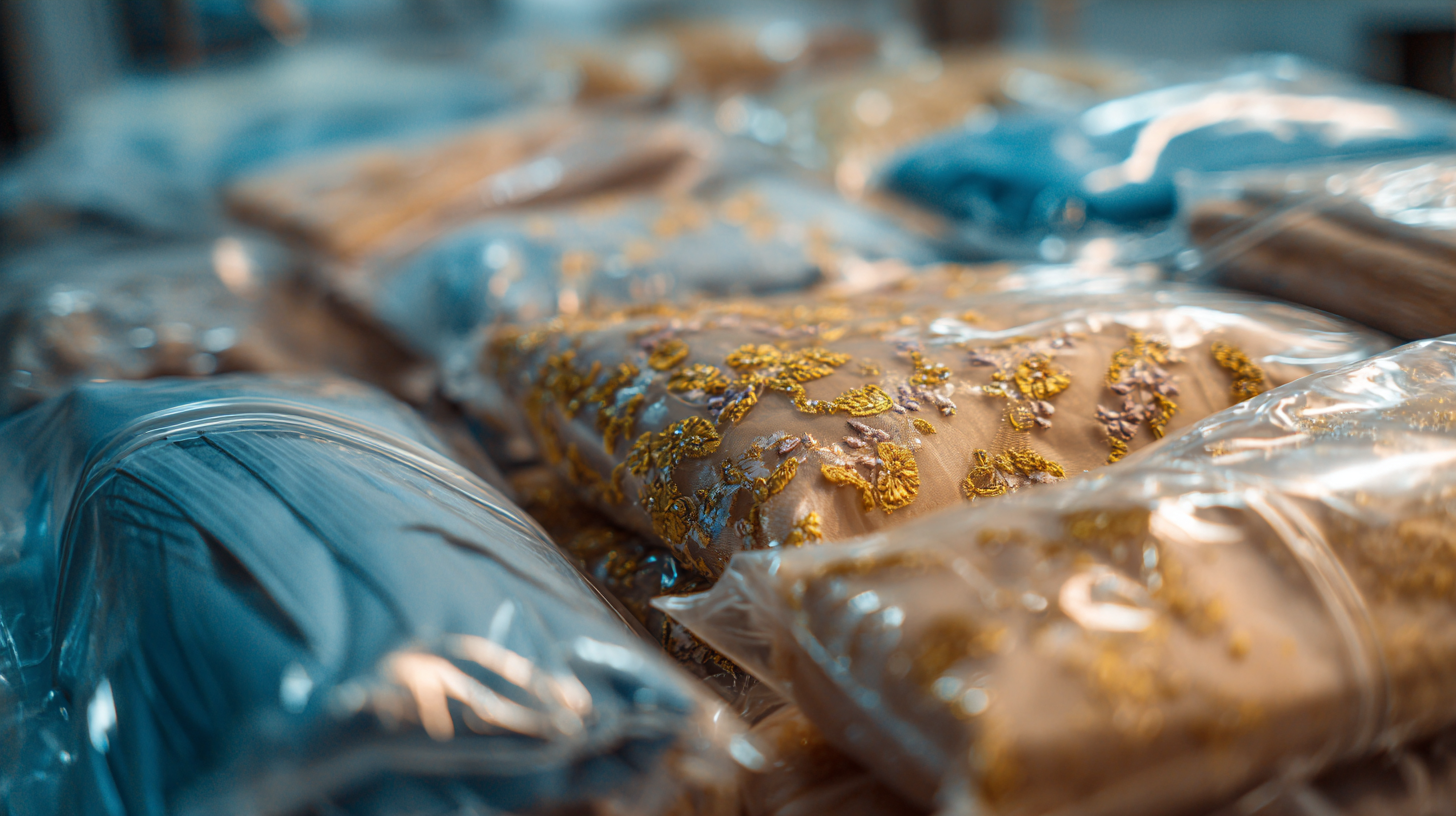The production of Clothes Vacuum Bags has become a critical aspect of the textile and home goods industry, primarily due to the growing demand for space-saving storage solutions. According to a recent market research report by Grand View Research, the global vacuum storage bags market size was valued at approximately $364 million in 2022 and is projected to expand at a CAGR of 6.2% from 2023 to 2030. However, manufacturers face numerous challenges in meeting the stringent production standards that are imperative for ensuring product quality and consumer satisfaction. These challenges include sourcing high-quality materials, maintaining production efficiency, and adhering to eco-friendly practices, all while navigating regulatory compliance and varying consumer expectations. As a result, the industry must continuously innovate and adapt to address these complexities in order to deliver the best Clothes Vacuum Bags to an increasingly discerning market.

The production of clothing vacuum bags is fraught with challenges, particularly when it comes to compliance with international standards. Manufacturers often grapple with varying regulations set forth by different countries, making it difficult to create a universally acceptable product. These discrepancies can stem from differing safety standards, material requirements, and environmental regulations, which can create significant obstacles during both the design and manufacturing processes. Brands aiming to enter global markets must navigate this labyrinth of compliance, increasing their production costs and complexity.
Additionally, staying up-to-date with evolving regulations adds another layer of difficulty for manufacturers. As sustainability becomes a global priority, new standards aimed at reducing environmental impact frequently emerge. Companies must not only ensure their products meet current standards but also anticipate future requirements to avoid costly redesigns and re-evaluations. This proactive approach requires substantial investment in research and development, as well as a commitment to sustainable practices, which can be particularly challenging for smaller manufacturers with limited resources. Thus, the quest for compliance is an ongoing battle that defines the landscape of the clothing vacuum bag industry.
In the clothing industry, maintaining high production standards for vacuum bags is essential for ensuring product longevity and customer satisfaction. Quality control measures play a pivotal role in this process. Manufacturers must frequently assess materials, manufacturing processes, and the final product to meet industry benchmarks. Implementing stringent testing protocols can help identify defects early, ensuring that only the highest quality bags reach the market.
Tips for effective quality control include establishing a robust supplier verification process. This ensures that raw materials meet necessary specifications before production begins. Additionally, incorporating regular audits throughout the manufacturing stages can catch any discrepancies and maintain consistency in product quality. Implementing a feedback loop from end-users can also provide valuable insights into potential issues, allowing manufacturers to make timely adjustments.
Furthermore, training staff on quality standards and best practices can significantly enhance overall production quality. Staff should be well-versed in identifying defects and understanding the standards expected from them. By prioritizing quality control measures and continuously evaluating processes, manufacturers can navigate the challenges of producing the best clothing vacuum bags in the industry.
| Quality Control Measure | Description | Challenges Faced | Impact on Production |
|---|---|---|---|
| Material Testing | Testing fabrics for durability and resistance to wear | Variability in raw materials quality | Increased defect rates in production |
| Dimensional Inspection | Ensuring bags meet specified dimensions | Equipment calibration issues | Material wastage and higher production costs |
| Sealing Integrity Testing | Testing if the bags can hold vacuum without leaks | Inconsistencies in sealing methods | Failure rates leading to customer returns |
| Heat Resistance Testing | Checking the bags' ability to withstand high temperatures | Lack of standardized testing procedures | Reputation risk and potential product recalls |
| User Experience Testing | Assessing the ease of use and functionality of bags | Difficulty in gathering user feedback | Reduced customer satisfaction and sales |
The manufacturing landscape for clothes vacuum bags is increasingly shaped by stringent environmental regulations that aim to mitigate ecological damage while fostering sustainable production practices. As evidenced by recent studies, manufacturers are grappling with the dual challenge of adhering to these regulations while maintaining product quality and competitiveness. Compliance often necessitates significant changes in production processes, which can lead to increased costs and operational complexity. This is particularly evident in industries such as cosmetics, where the incorporation of eco-friendly materials has become essential, yet also demands careful management of chemical substances to meet health standards.
In China, the growth of green technology and sustainable manufacturing practices has become a focal point for innovation. Regulations have spurred the adoption of advanced production methods that reduce emissions and encourage recycling, thereby aligning with global sustainability goals. However, the impact of heterogeneous environmental regulations can vary widely among enterprises, influencing their performance and adaptive strategies. For manufacturers of best clothes vacuum bags, aligning product development with these evolving standards not only poses challenges but also opens up opportunities for innovation and competitive differentiation in a rapidly changing market.

In the competitive landscape of clothing storage solutions, manufacturers of vacuum bags face the intricate challenge of balancing cost efficiency with high-quality standards. While it may be tempting to cut corners to reduce production costs, doing so can compromise the durability and effectiveness of vacuum bags. Inferior materials can lead to leaks and reduced compression, ultimately disappointing customers who rely on these products for proper clothing preservation. Thus, achieving a balance is not merely a financial decision, but a commitment to customer satisfaction and brand integrity.

To navigate this dichotomy, manufacturers must adopt innovative materials and production techniques that enhance quality without significantly increasing costs. Investments in research and development can lead to the discovery of more sustainable, high-performance materials that meet industry standards. Additionally, employing automation in production lines can streamline operations and reduce labor costs while maintaining high quality. By prioritizing investments that foster both efficiency and excellence, companies can create vacuum bags that not only meet but exceed consumer expectations, ensuring long-term success in the market.
As the demand for vacuum storage solutions grows, manufacturers are facing the challenge of adapting their products to meet evolving consumer preferences. Recent insights highlight that
80% of consumers gravitate towards brands that offer
personalized options. This trend is significant as brands must now consider individual needs and preferences when designing vacuum bags,
moving away from one-size-fits-all solutions.
Incorporating advanced materials and innovative designs that cater to style and functionality is essential. Reports indicate that consumers are increasingly investing in solutions that not only optimize space but also enhance the overall
aesthetic appeal of their homes. With the flexible packaging market projected to expand significantly, companies in the vacuum bag sector can adopt practices from this industry. For instance,
utilizing biodegradable materials or customizable designs may improve product attractiveness.
